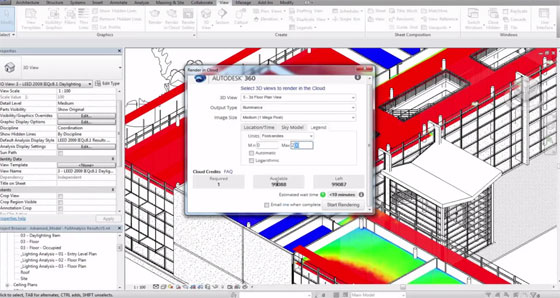This is amazing video where building analysis expert David Sheer shows how is revit's lighting analysis and luminance renderings.
Revit Lighting analysis: Lighting Analysis Extension for Revit with Daylighting for LEED enables the use of the Rendering cloud service in Autodesk 360 to perform very fast and physically accurate daylighting analysis from within Revit 2014 or Revit 2015. In case, any of you missed the news from earlier this year: Rendering in Autodesk 360 is an extremely fast cloud service that recently exposed illuminance results that are comparable to Radiance with the exception of one aspect - speed. The Rendering cloud service accounts for all light bounces and is about 24x to 1000x faster than Radiance.
Revit luminance rendering: Illuminance is a measure of how much light falls on a surface. It is useful for determining whether there is enough light to perform different activities (like reading, office work, or drafting). Illuminance is measured in lux or footcandles (1 footcandle = 10.7 lux).
Daylighting performance depends on the design and the day, time, and sky conditions. Illuminance renderings for representative times offer a way to understand the performance of a space for daylighting. For example, the LEED daylighting credit (8.1) requires 75% of regularly occupied spaces to have daylight illuminance values between 10 and 500 foot-candles in a clear sky condition on September 21 at 9am and 3pm. Other metrics like Daylight Autonomy aggregate illuminance values for the entire year.
This video will enable us to: Automate simulation and document results for LEED daylighting credits.
